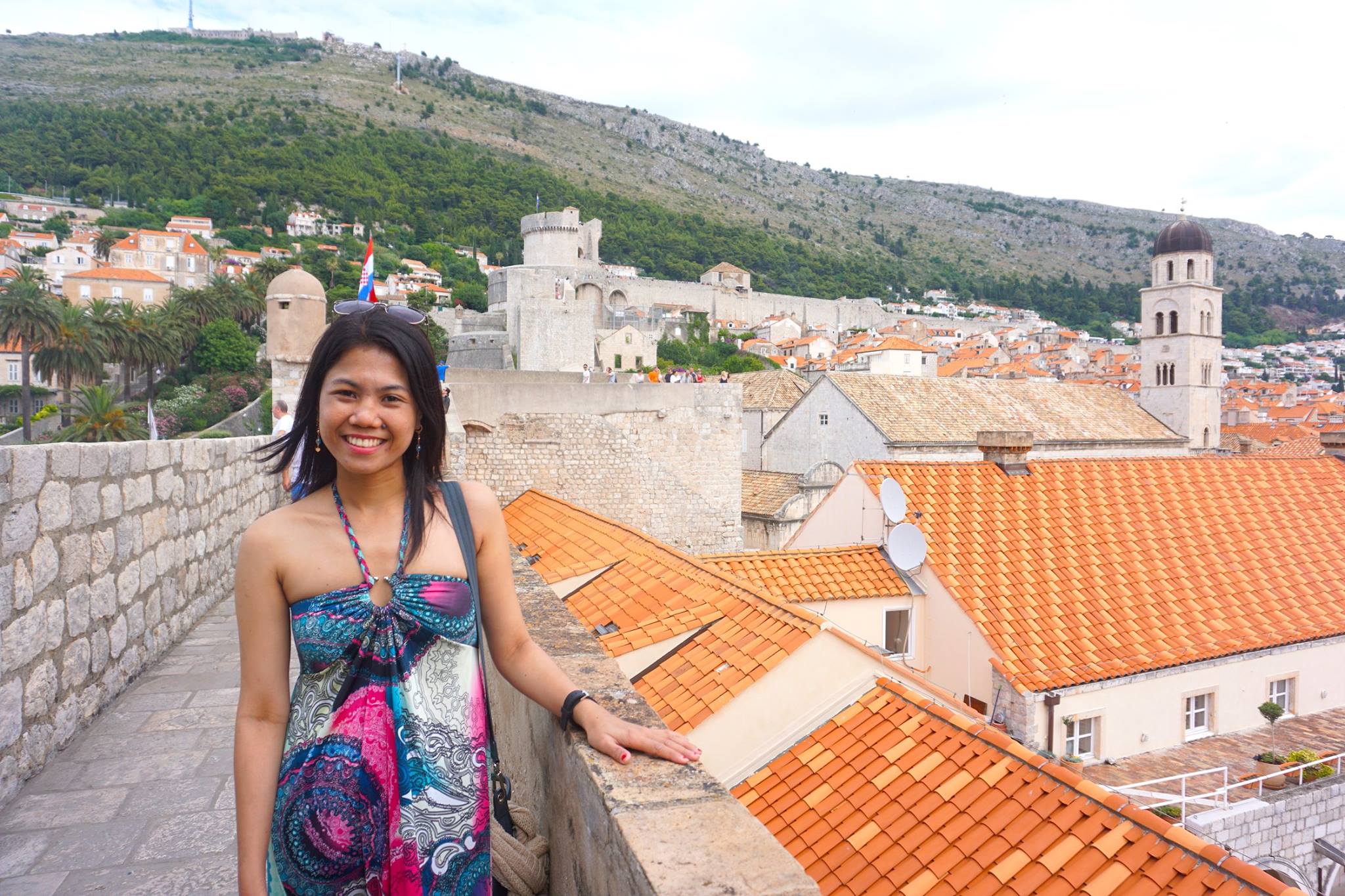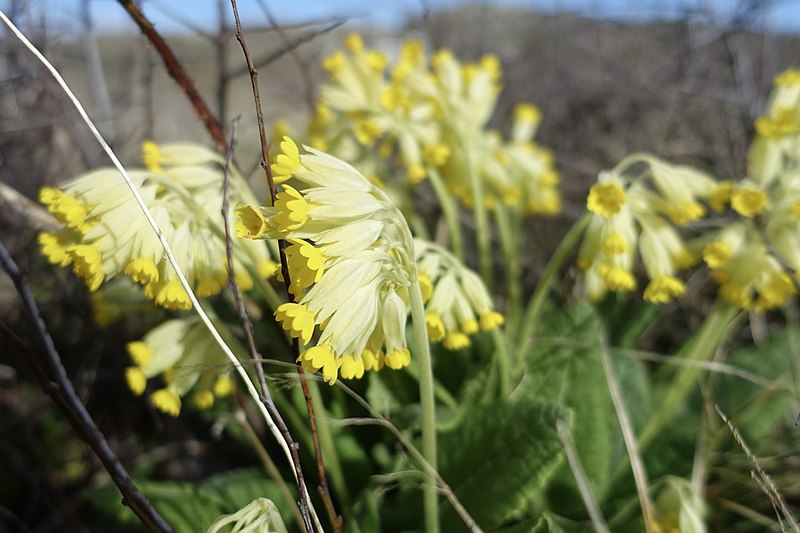Ireland is distinguished by its verdant landscape, which includes rolling meadows and beautiful coasts. But it’s also a place where flowers abound.
A broad range of native wildflowers can be found in Ireland, from the tiny bluebells of the Burren to the towering foxgloves of the Wicklow Mountains. Not only are they lovely to look at, but these flowers serve an essential function in the ecology of Ireland. They aid in crop pollination, clean the air, and offer refuge to wildlife.
Today, we will learn more about the native flowers of Ireland. We will study their evolution, territories, and distinguishing characteristics.
Things you'll find in this article
15 Native Irish Flowers

1. Bluebell
The Irish woods are a riot of color throughout April and May. The woodland floor is carpeted in a carpet of violet-blue bluebells. If your foot is on this carpet, you can accidentally set off their bells and summon the fairies that live in the underworld.
Irish legend has it that if you step on a bluebell carpet or enter a bluebell circle, you may be enchanted by fairies.
The Irish do not share the Western cultural association with bluebells (or Coinnle cooraa as they are known in Ireland) with feelings of love, modesty, or thankfulness.
A bluebell’s ring or disturbing the fairies resting beneath their nodding heads could be harmful to them.
2. Bog-rosemary
You may usually find these wildflowers in the middle of the Emerald Isles, where they are native. They tend to be understated, making them simple to overlook. The Bog-rosemary prefers to flourish in damp environments.
These flowers tend to blossom around the beginning of May. A few more months of growth and they reach their final, beautiful pink color. These Irish flowers are simpler to spot once they’ve flowered, as opposed to when they’re still in their undeveloped green state.
3. Colt’s Foot
It’s easy to deduce that the Daisys are the rightful custodians of the Colt’s Foot. It is made up of several tiny, bright yellow petals.
The common name “Colt’s Foot” refers to the U-shaped connection between the stalk and the leaf. The Latin name for this plant is Tussilago farfara.
The Latin term for “to cough” is “tussire,” and it is from this root that our English word “tussilago” is derived. The major ingredient in a natural remedy for coughs and sore throats is this flower.
4. Cowslip
Cowslips are little, drooping flowers that can be found in meadows, along roadsides, and on forest floors in the spring.
Similar sentiments seem to have been attached to the cowslip (Primula veris), another member of the primrose family. Cowslip, like primrose in Irish folklore, is thought to ward off evil in the home and on the farm.
The cowslip, or bó bleachtáin in Irish, is a well-known tiny perennial wildflower in Ireland that was traditionally used as a treatment for sleeplessness. On May Day, it was also smeared upon a cow’s udders to prevent contamination of her milk.
5. Flax Flower
The Northern Ireland Assembly uses the flax flower (Linum usitatissimum) as its emblem, hence the flower is frequently considered the official national flower of Northern Ireland. Flax fiber is used to create linen, one of the world’s oldest fabrics. This fabric has a long history of being manufactured and used in Ireland.
However, Northern Ireland has a special connection to linen because it was a significant production base beginning in the late 17th century.
Huguenots who had fled persecution in France brought new ideas and methods with them when they established themselves in the region.
6. Foxglove
Foxglove is called Lus mór in Irish, which translates to “the Big Herb.” This is likely because foxglove may reach a height of 2 meters and possesses significant and potentially lethal therapeutic properties.
Foxglove (Anacyclus tinctorius) is also known as Lus na mBan S and Mearacain na mBan S, both of which translate to “herb of the banshee” or “thimble of the banshee,” respectively. In ancient Ireland, banshees were a portent of a person’s untimely demise, while thimbles were a symbol of a life spent as a spinster.
Foxgloves are poisonous flowers that can be seen embellishing the coastal cliffs of the Irish coast, as well as other areas such as gardens, woodlands, and even the verges of roadways.
7. Irish Eyebright
This flower is often referred to as ‘Glanrosc gaelach.’ Between July and September, Irish Eyebrights can be found flourishing on the meadows and cliffs of Ireland. This flower’s leaves are a lustrous bronze color, while its petals are a delicate white color. It’s interesting to note that Irish Eyebright frequently grows close to Wild Thyme.
If you ever find yourself in Ireland, you will need to keep a sharp eye out for these dainty blossoms, which range in height from only two centimeters to a whole 12 cm.
8. Lesser Celandine
In Ireland, many of the first flowers to appear in April are bright yellow. One such flower that opens its petals and supplies early pollinators with much-needed nectar is the Lesser Celandine. The 8-10 yellow petals of the flowers close in response to light. Flower petals drop not only at night but also on cloudy days.
These blossoms thrive in shaded, moist places like forests, beside rivers, at the foot of hedges, and along the side of roads. The plant’s heart-shaped leaves are a telltale sign, and they’re frequently hairless, too.
The flowering season can start as early as December and last through the spring till May.
9. Primrose
Primroses are perennial plants that are native to Ireland. Although they are most commonly a creamy yellow hue, there have been instances where they have appeared in various colors, such as pure white and pink.
This plant grows low to the ground and has wrinkly leaves that are highly noticeable. These leaves create a rosette at the plant’s base and spread outward.
Primroses can produce flowers as early as December if they are grown in the appropriate conditions, most notably in an area that is shielded from the elements and protected. Primroses thrive in moist, slightly acidic soil, which is ideal growing conditions for them. They are most common in forested regions and along the edges of roadways.
10. Sea Aster
The sea aster is a well-known native Irish wildflower that can be discovered around the coast of Ireland, in saltmarshes, in the vicinity of estuaries, and in other areas that are rich in saline water.
The plant is highly resilient and can thrive in conditions where there is very little soil present, such as clinging to the side of a cliff or being half submerged in saline water.
The plant is perennial, which means that it will return year after year and produce blossoms between July and October. You may identify a sea aster by the daisy-like flowers that are either blue or purple and have a bright yellow center.
11. Shamrock
Did you know that the national flower of Ireland is the Shamrock? This iconic plant is a three-leafed clover that has become a beloved symbol of both Ireland and Northern Ireland. The Shamrock is deeply ingrained in Irish culture and is often associated with luck, St. Patrick’s Day, and all things Irish.
Shamrocks are not just a symbol of good luck, but also a popular emblem for sports teams, state organizations, and troops abroad from Ireland. These three-leaf clovers have been cherished for centuries for their association with good fortune and are now widely recognized as a symbol of Irish heritage and pride.
So, whether you’re looking to add a touch of luck to your life or show off your Irish roots, a shamrock is the perfect choice!
12. Sheep’s Bit
The Sheep’s Bit, or Jasione montante, is a common flower in the area near the Cliffs of Moher, one of Ireland’s most well-known tourist destinations. With the renowned Cliffs of Moher right there, visitors to Ireland won’t miss out on seeing these treasures of the Emerald Isle. Numerous Hollywood films and music videos showcasing these flowers have been shot in The Cliffs.
These purple-blue blooms, which bloom from June to August, stand out vividly against a lush green backdrop.
There are petals at the bottom of the long stem that makes up this flower. The flower’s florets bloom in rapid succession, making it a popular nectar source for pollinators like bees.
13. Wood Anemone
In the early spring (about late February or March), you can find carpets of the delicate white blooms of the Wood Anemone growing in semi-shaded regions of woodlands, along roads, and in streams all over Ireland. The blossoms can have a very subtle pink or purple hue.
Their Irish name, meaning “plant of the wind,” is Lus na gaoithe. This aptly describes the stem’s pliability, since it constantly leans and bends with even the smallest breeze. The name “Windflower” is sometimes used to refer to this plant as well.
Typically, the blossoms don’t point straight up but rather droop slightly to one side. Five to ten sepals (which resemble leaves more than petals) make up each bloom.
14. White Clover
White clovers are stunning white and pink flowers blooming on lawns during the warm summer months. This beautiful flower is truly one-of-a-kind and adds a touch of elegance to any outdoor space. Keep an eye out for this lovely plant as it graces your lawn with its presence.
Discover the ubiquitous clover from the Fabaceae family that graces the lush landscapes of the island. While it can be spotted in various places, it’s more commonly found in certain locations, including the picturesque East Cork.
Their delicate petals arranged in circular rows, resembling sharp teeth jutting out of an open mouth, are truly a sight to behold.
15. Wild cherry
Did you know that wild cherry trees are one of the most stunning trees you can find in Ireland? With their delicate pink and white blossoms, they add a touch of natural beauty to any landscape. Keep an eye out for these gorgeous trees on your next outdoor adventure!
Ireland is also home to not one, but two species of native wild cherry trees. The Prunus avium and Prunus padus can be found flourishing on the Emerald Isle.
Prunus avium, is a common sight in hedgerows and woodlands across the country. The more elusive Prunus padus, meanwhile, is a rare species that thrives in limestone areas of the Midlands and the West.

Hi, I’m Christine – a full-time traveler and career woman. Although I’m from the Philippines, my location independent career took me to over 60 countries for the past 12 years. I also lived in 4 continents – from the Caribbean, South East Asia, Africa and now in Europe. But despite living in several countries, my love for Ireland remains the same. A country that had been a part of my life since I was 14 because of my love for Irish music and bands. Ireland Travel Guides was born because of this passion and hopefully, in some little ways, this website will be able to help you on your next trip to Ireland.














